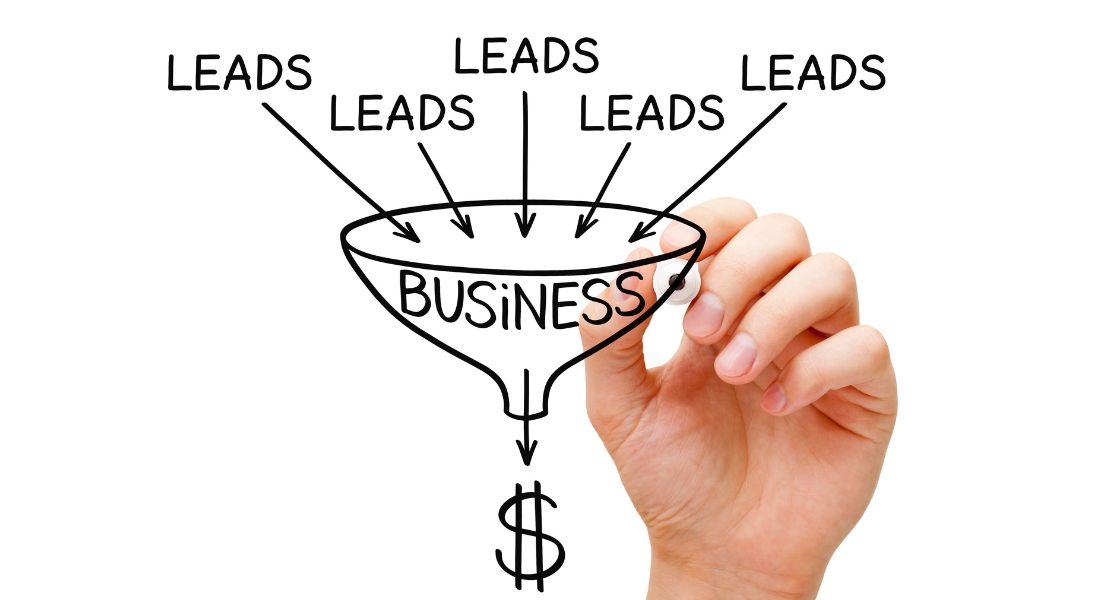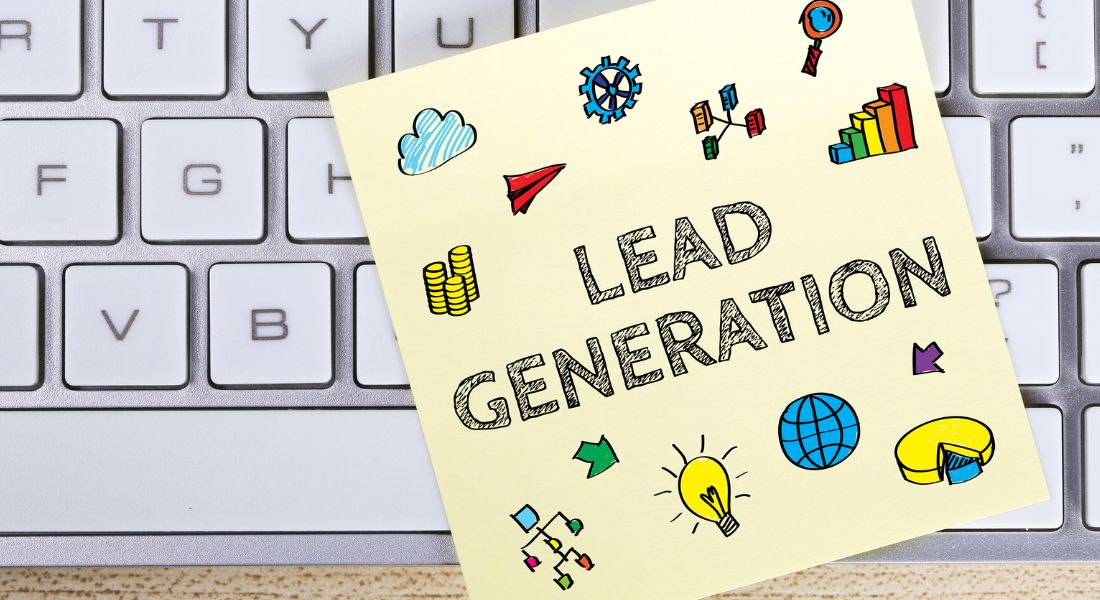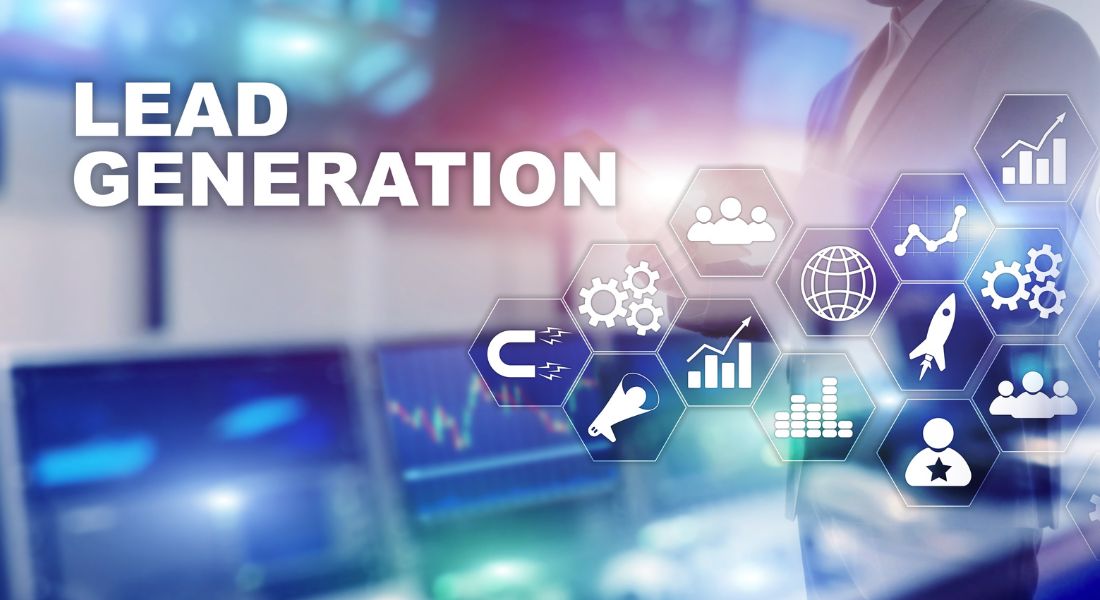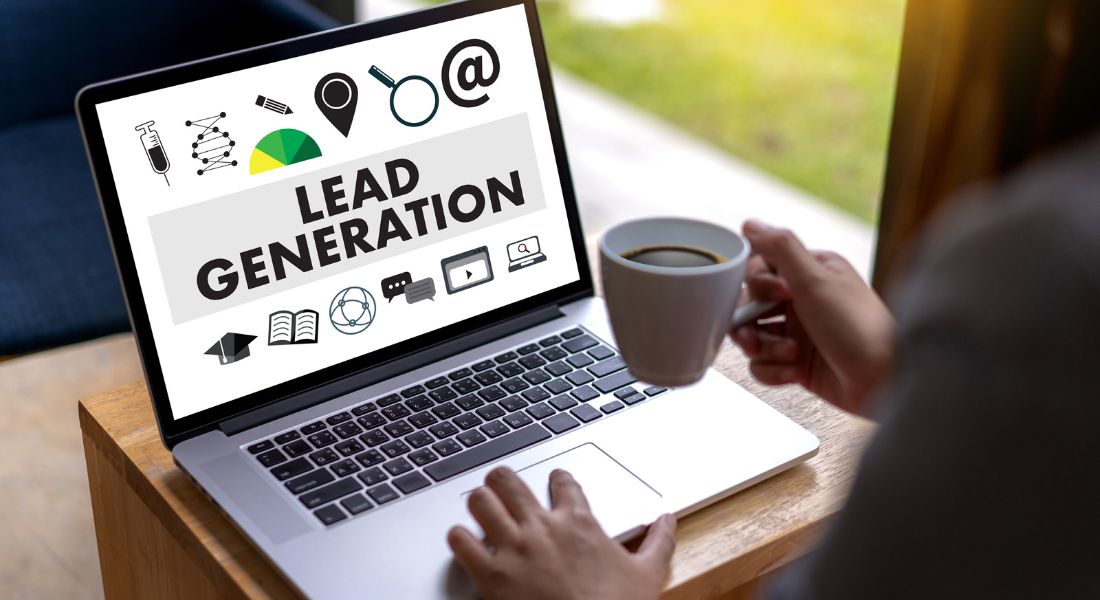Are you tired of shooting in the dark when it comes to lead generation? Fret not, because we have a game-changer that will revolutionise your sales outreach. Learn how our AI-powered LinkedIn guide uncovers gold mines of prospects and catapults your business growth right here, right now! Don’t miss out on this opportunity and risk losing ground to your competitors. Your sales team will thank you for it!
Our LinkedIn Lead Generation Guide is designed to help businesses leverage the powerful platform for B2B marketing. The guide covers every aspect of generating leads, including creating effective personas, targeting the right audience, and using Sponsored Content to reach specific professionals on LinkedIn. It also includes best practices for optimising campaigns and measuring ROI using LinkedIn’s tracking and analytics tools. By following this comprehensive guide, businesses can increase their lead generation success on LinkedIn.
Post Contents
ToggleThe LinkedIn Lead Generation Guide
LinkedIn is a powerful platform for B2B lead generation, and the LinkedIn Lead Generation Guide is an essential resource to help you maximise its potential. This guide is designed to provide you with step-by-step instructions on how to create successful LinkedIn campaigns that generate leads and grow your business.
The guide covers everything from optimising your LinkedIn profile to crafting personalised messaging, targeting and tracking your campaigns, and measuring ROI. It also provides valuable insights and best practices for creating buyer personas and engaging with potential leads.
If you’re new to using LinkedIn for lead generation, the guide offers a helpful introduction that outlines the benefits of using the platform for B2B marketing. For example, LinkedIn is home to over 750 million professionals, making it an ideal place to connect with your target audience. It also offers robust targeting features that enable you to reach the right people with personalised messaging.
The guide goes on to explain in detail how to optimise your LinkedIn profile to attract potential leads. This includes tips on how to create a compelling headline, summary, and work experience section that showcases your expertise and value proposition.
Another valuable section of the guide focuses on network building and engagement tactics. This includes strategies for creating meaningful connections with contacts and potential leads, as well as using LinkedIn Groups and content sharing to increase visibility and engagement.
One example of effective engagement tactics is to participate in industry groups relevant to your target audience. By sharing insightful posts and contributing thoughtful comments, you can establish yourself as a thought leader in your field and build trust with potential leads.
- LinkedIn is a powerful platform for B2B lead generation, and the LinkedIn Lead Generation Guide is an essential resource for maximising its potential.
- The guide provides step-by-step instructions on creating successful LinkedIn campaigns that generate leads and grow your business by optimising your profile, crafting personalised messaging, targeting and tracking campaigns, and measuring ROI.
- With over 750 million professionals on the platform, robust targeting capabilities, and network building and engagement tactics outlined in the guide, businesses can establish themselves as thought leaders in their industry and build trust with potential leads.
- Participating in industry groups relevant to your target audience is one effective tactic for engaging with potential leads and establishing yourself as a thought leader.

Optimise Your LinkedIn Profile
Your LinkedIn profile is often the first interaction potential leads have with your brand, so it’s essential that it’s optimised to make a great first impression. Here are some tips on how to do just that:
1. Create a Compelling Headline
Your headline is the first thing people see when they view your profile, so it’s essential that it catches their attention. Use keywords relevant to your industry or target audience to make it easier for people to find you in search results.
For example, if you’re a marketing consultant specialising in SEO, your headline might read “SEO Expert and Digital Marketing Consultant – Helping Businesses Drive Traffic and Generate Leads.
2. Craft a Compelling Summary
Your summary should provide an overview of who you are, what you do, and why you’re passionate about it. Use this section to highlight your unique value proposition and showcase examples of your work.
Think of your summary as the elevator pitch for your personal brand. It should be concise, compelling, and leave people curious to learn more.
3. Focus on Your Work Experience
Use your work experience section to showcase your professional achievements and highlight your skills and expertise. This is also a great place to include case studies, testimonials, or other social proof that demonstrates the value you bring to clients or employers.
Some people argue that work experience is less important than skills and achievements when it comes to attracting potential leads on LinkedIn. However, I believe that work experience helps build credibility and trust with potential clients or employers.
Overall, optimising your LinkedIn profile is essential for successful lead generation on the platform. By following these tips and best practices, you can create a profile that attracts potential leads and sets you up for success in all of your B2B marketing efforts.
Network & Engage with Contacts & Potential Leads
Networking and engaging with contacts and potential leads on LinkedIn is a crucial part of lead generation. Establishing relationships, building trust, and showcasing your expertise are essential in attracting quality leads. Here are a few ways to network and engage effectively on LinkedIn:
First, start by optimising your profile and making sure it reflects your brand. This means adding a professional profile photo, an attention-grabbing headline, and an engaging summary that highlights your skills, experience, and achievements.
Next, join LinkedIn groups related to your industry or niche and participate in discussions. Sharing valuable insights and providing helpful solutions can help you establish yourself as an expert in your field.
Some might argue that reaching out to potential leads directly without first establishing a connection may seem too forward or salesy. However, sending personalised connection requests along with a brief message can show sincerity and genuine interest in building a connection.
Another effective way to network is through engaging with the content of others. Liking, commenting, or sharing relevant posts from people in your industry can catch their attention and spark conversation.
Think of LinkedIn networking like attending a networking event. You wouldn’t just walk up to someone you don’t know and try to sell them something right away. Instead, you would initiate small talk, ask questions about their interests or business objectives, find common ground, and offer something of value.
Now that you have established connections and started conversations, it’s time to move onto lead generation tactics using sponsored content and advertising.
Lead Generation Tactics on LinkedIn
Sponsoring content and utilising advertising on LinkedIn are two powerful tools for lead generation. Here are some best practises for using these methods effectively:
Sponsored Content is a native advertising format that appears in users’ LinkedIn feeds, just like regular posts. One effective tactic is to personalise sponsored content to reach specific professionals by targeting their job title, industry, skills, or location.
Another method is to use Matched Audiences, which allows you to serve ads to members on LinkedIn who have already demonstrated interest in your website or who are part of target companies or contacts in your existing lists. This approach can help you reach highly valuable prospects and build relationships with them.
While some may argue that advertising on LinkedIn can be expensive and not worth the investment, keep in mind that the cost per lead for LinkedIn ads is 28% lower than Google AdWords according to a competitor study. Additionally, as mentioned earlier, LinkedIn is home to over 575 million professionals, including 2.8 million decision makers and 260,000 C-suite executives— a highly targeted audience for B2B marketers.
Visuals and messaging are also important factors for successful Sponsored Content campaigns. Eye-catching visuals and concise messaging that highlights the benefits of your product/service can grab users’ attention and drive conversions.
Think of sponsored content like having a billboard on a busy highway. You want your ad to stand out from the rest and capture people’s attention as they’re scrolling through their feed.
Using these lead generation tactics combined with effective networking strategies can unlock your potential for attracting quality leads on LinkedIn. However, it’s important to continually test and optimise your campaigns using LinkedIn’s analytics tools to ensure maximum ROI.
- As of 2023, LinkedIn has more than 575 million professionals in its user base, including 2.8 million decision-makers and 260,000 C-suite executives.
- Recent research shows that LinkedIn is the most potent platform for B2B lead generation, with 89% of B2B marketers utilising it, and 62% reporting successful lead generation – this is twice as effective as its closest social media competitor.
- A survey indicates that 75% of prospective buyers assert that thought leadership assists them in selecting vendors to shortlist, and 70% say LinkedIn is among the most trusted sources of information – ranking equally with leading publishers such as WSJ.com (Wall Street Journal) and Forbes.com.

Sponsoring Content and Advertising
One of the most effective ways to generate leads on LinkedIn is by using sponsored content. Sponsored content allows businesses to promote their brand, products or services directly to the LinkedIn members who are most likely to be interested in them. It is a powerful tool for lead generation because it shows up directly in a user’s news feed, making it more likely that they will engage with your content.
For instance, if you are selling software solutions for small businesses, you can use sponsored content to reach small business owners or decision makers. You can target your audience based on their location, industry, job title, and other demographics. By doing so, you can make sure that your content is reaching relevant professionals and not being wasted.
According to LinkedIn, sponsored content can drive 3x better engagement than traditional display ads. It means that businesses can not only reach their target audience but also engage with them in a meaningful way. Sponsored content has higher click-through rates and lower cost-per-click than Google AdWords too.
Some businesses might argue that sponsored content is a waste of money as LinkedIn is an expensive advertising platform compared to others like Facebook or Google Ads. However, it’s essential to understand that LinkedIn has more than 575 million active members worldwide- all professionals who are active on the site and looking for valuable insights and connections relevant to their professional life. So by sponsoring content, you can put your message in front of the right people at the right time.
To illustrate this point further, think about how much easier it would be to sell office equipment at an office fair rather than at a mall. At an office fair where everyone there is working in an office setting, you know immediately that your message will resonate with visitors; while at the mall, you’re taking a broadcasting approach hoping people see and pick up your message.
The bottom line is that sponsoring content can be a highly effective way to generate leads on LinkedIn. However, it’s crucial to know how to do it right! In the next section, we will explore matched audiences and targeting methods on LinkedIn.
Matched Audiences and Targeting Methods
LinkedIn has more extensive targeting capabilities than other social media platforms. It allows businesses to target members using filters like job title, company size, industry, skillset, location and can even upload their mailing list to target specific email addresses. And matched audiences is another tool that facilitates precise targeting.
Matched audiences let you refine your audience based on website visitors or those in your CRM database. It works by choosing a segment of contacts from your database and then matching them with LinkedIn accounts for targeted advertising campaigns. It helps you reach people who are already interested in your product or service and keeps you at the top of their mind even after they’ve left your site.
Imagine a marketing manager interested in upgrading their email campaign software. During a Google Search for “best email campaign software,” they land on your website but ultimately don’t sign up for a demo. By utilising matched audiences on LinkedIn Ads, our hypothetical company can present ads for the same software platform wherever these users go next online: On YouTube, Instagram, or any other app or website where there’s an ad placement.
Using matched audiences boosts performance metrics like click-through rates (CTR) and conversion rates as it assists in delivering targeted messaging through visuals and copy that will reinforce the visitors’ decisions taken earlier during the purchase journey lifecycle.
However, there are certain limitations to keep in mind while using it. First, not every contact on your mailing list may have a LinkedIn account which ultimately limits matched audiences’ scope of functionality if data coverage is weak. Moreover, matched audiences also require more significant budget allocation since it’s a high-value target method.
One way to think about this is like casting a fishing net. The more significant the net, the more likely you are to catch fish – but it also comes with a higher cost for the material and labour associated with its implementation. Targeting methods work similarly in that they give businesses access to a larger pool of potential leads by expanding the scope of who sees and interacts with their content.
Strategies for Success in LinkedIn Lead Generation
When it comes to unlocking your lead generation potential on LinkedIn, you need the right strategies to ensure your efforts are effective. Here are some key strategies that can help you see success:
Leverage Existing Relationships: One of the most powerful aspects of LinkedIn is that it allows you to connect with existing contacts and build upon those relationships. Reach out to your current connections, especially those who are most likely to be interested in your product or service, and engage with their posts. Share helpful articles, leave thoughtful comments, and ask for introductions to their connections who could benefit from what you have to offer.
Personalization: Personalization is key when it comes to engaging with potential leads on LinkedIn. Try segmenting your target audience by industry, seniority level, etc., and crafting personalised messages based on each segment’s pain points or needs. This will show that you’ve done your research and can offer a targeted solution for specific problems.
Timing is Everything: When it comes to posting content on LinkedIn, timing is everything. While there is no one perfect time to post that works for everyone, find out what works for your target audience and experiment with different times of day until you find the right one. But don’t forget that consistency is also important; post on a regular basis to keep engagement levels high.
Quality over Quantity: While it might be tempting to cast a wide net when it comes to lead generation, focusing on quality over quantity can ultimately lead to better results. Rather than aiming for a high volume of leads, focus on reaching the right people with the right message – even if that means narrowing your focus. It’s always better to have fewer high-quality leads than countless low-quality ones who aren’t likely to convert.
Creating Buyer Personas and Custom Messaging
In order to craft personalised messages that resonate with your target audience, it’s important to start by creating buyer personas. A buyer persona is a fictional representation of your ideal customer, including their demographics, job title, challenges, and goals. Here are some tips for creating effective buyer personas and messaging:
Start with Research: Before you can create accurate buyer personas and custom messaging, you need to do your research. Look at data from existing customers, including their job titles, company size, and industry. This will give you a better idea of who you should be targeting on LinkedIn.
Focus on Pain Points: When crafting custom messaging for your buyer personas, it’s important to focus on their pain points – the problems they need solutions for. This will show that you understand your audience’s needs and can offer a targeted solution.
Keep it Simple: While you want to personalise your messaging as much as possible, it’s also important not to overcomplicate things. Be concise and clear in your message so that potential leads immediately understand the value you provide.
Use Visuals: Visuals are an effective way to capture the attention of potential leads. Consider using eye-catching graphics or videos in your LinkedIn content to make it stand out in people’s newsfeeds.
These strategies may take time and effort but can reap significant rewards when effectively executed. Next up is “Measuring ROI on Your LinkedIn Lead Generation Activities” – join us there!

Measuring ROI on Your LinkedIn Lead Generation Activities
When it comes to lead generation, measuring ROI is crucial for optimising your efforts and ensuring that you’re getting the most out of your investment. LinkedIn offers a variety of tracking and analytics tools that can help you measure the effectiveness of your lead generation activities.
One way to measure ROI is by tracking your conversion rates. Conversion tracking allows you to see how many people are clicking on your ads and taking the desired action, such as filling out a form or downloading a whitepaper. By monitoring your conversion rates over time, you can make adjustments to your campaigns and optimise your messaging to improve your results.
Another important metric to track is cost per lead (CPL). This measures how much you’re spending on average for each new lead generated through your LinkedIn campaigns. By calculating CPL, you can determine if you’re getting a good return on investment for your advertising spend and adjust your targeting or messaging accordingly.
LinkedIn also offers robust reporting capabilities that allow you to drill down into the performance of individual campaigns and analyse the effectiveness of different targeting parameters. By utilising these reports, you can gain insight into what’s working and what’s not working in your lead generation efforts and make data-driven decisions about where to focus your resources.
For example, imagine that you’re running two separate LinkedIn Sponsored Content campaigns targeted at different audiences within the same industry. By comparing the performance of these campaigns side-by-side using LinkedIn’s reporting tools, you might discover that one campaign is generating leads at a much lower cost than the other. Armed with this information, you could allocate more of your budget to the higher-performing campaign and adjust the messaging or targeting parameters of the lower-performing campaign to improve its results.
Measuring ROI is also important for demonstrating the value of your LinkedIn lead generation efforts to key stakeholders within your organisation. By providing concrete data on the number of leads generated, conversion rates, and other key metrics, you can build a compelling case for investing in LinkedIn as part of your overall marketing strategy.
Of course, measuring ROI is not always a straightforward process. Depending on the complexity of your lead generation funnel and the length of your sales cycle, it may take some time to see a return on investment from your LinkedIn campaigns. In some cases, you may need to track multiple touchpoints with individual leads over the course of several months before being able to accurately measure the ROI of your efforts.
Utilising LinkedIn’s Analytics Tools and Reports
To get the most out of your LinkedIn lead generation campaigns, it’s important to take full advantage of the platform’s analytics tools and reporting capabilities. By utilising these resources effectively, you can gain valuable insights into audience behaviour, campaign performance, and overall trends in your industry.
One key resource for monitoring campaign performance is the Campaign Manager dashboard. This tool provides an overview of all your active campaigns and allows you to view performance metrics such as clicks, impressions, engagement rates, and more. You can also use the Campaign Manager to adjust targeting parameters or adjust bids to optimise performance in real-time.
LinkedIn’s Audience Insights tool is another valuable resource for understanding your target audience better. This tool provides information on factors like job title, seniority level, company size, and more for individuals within specific segments you’re targeting with ads. By utilising this feature along with data from third-party sources such as Google Analytics or HubSpot, you can gain deeper insights into audience behaviours and tailor your messaging accordingly.
For example, let’s say that you’re running a Sponsored Content ad aimed at HR professionals within healthcare organisations. Using Audience Insights data combined with information from Google Analytics on website visitors from these organisations, you might discover that this segment is particularly interested in topics related to employee retention. Armed with this information, you could adjust your messaging to focus more heavily on employee retention as a core value proposition.
LinkedIn also offers several other reporting tools, including the Lead Gen Forms Analytics dashboard and the Website Demographics tool, which provides information on visitors to your website who interacted with your LinkedIn ads. By utilising all of these tools in concert with one another, you can gain a complete picture of how your LinkedIn lead generation efforts are performing and make data-driven decisions about where to focus your resources.
Of course, it’s important to keep in mind that analytics tools are only one part of the lead generation equation. Ultimately, success on LinkedIn depends on creating compelling content and engaging with your target audience effectively. By combining effective messaging with targeted campaigns and diligent tracking and analysis, you can unlock the full potential of LinkedIn for lead generation purposes.

Common Questions and Responses
Are there any paid tools or services that can help with LinkedIn lead generation?
Yes, there are several paid tools and services that can significantly enhance your LinkedIn lead generation efforts. For instance, LinkedIn Sales Navigator is a powerful paid tool designed to help sales professionals find, qualify, and engage with potential leads on the platform. With a Sales Navigator account, you get access to advanced search filters, real-time insights on your target audience, lead recommendations based on your preferences, and the ability to save leads or accounts for later follow-up.
According to LinkedIn, companies that use Sales Navigator experience 45% larger deal sizes, 35% higher win rates, and 3x more pipeline within three months of adoption. Another great option is Dux-Soup, a chrome extension that automates parts of your LinkedIn outreach process. It allows you to visit profiles automatically and send personalised messages or connection requests in bulk.
However, it’s important to note that while these tools can help you save time and increase your reach, they won’t replace the need for well-crafted messaging and thoughtful targeting strategies. Effective lead generation requires a combination of technology and human touch. Just be sure to use these tools responsibly and avoid spamming or harassing potential leads.
Are there any specific strategies for B2B lead generation on LinkedIn?
Yes, there are several specific strategies for B2B lead generation on LinkedIn. Here are a few:
1. Optimise your company page: Your company page should showcase your brand and provide valuable information to potential leads. Make sure all sections are complete and up-to-date, including your profile picture, banner image, and “About Us” section.
2. Create engaging content: LinkedIn users are looking for educational and informative content. Sharing useful articles, blog posts, and industry insights can establish your brand as a thought leader and attract potential leads.
3. Utilise LinkedIn Groups: Joining relevant LinkedIn groups can help you connect with other professionals in your industry. Participating in group discussions and sharing valuable insights can help build relationships with potential leads.
4. Use targeted advertising: LinkedIn offers various advertising options that allow you to target specific job titles, industries, and companies. This ensures that your ads are reaching the right people and can increase the likelihood of generating qualified leads.
According to a study by Hubspot, LinkedIn is 277% more effective at generating leads than Facebook and Twitter. Additionally, LinkedIn reported that their platform drives over 80% of B2B social media leads.
In conclusion, by creating an optimised company page, sharing engaging content, utilising LinkedIn groups, and using targeted advertising, businesses can effectively generate B2B leads on LinkedIn.
What are some tips for optimising your LinkedIn profile for lead generation purposes?
If you want to generate leads on LinkedIn, optimising your profile is crucial. Your profile should be viewed as a sales page and therefore needs to contain the right information and lead prospects to take action. Here are some tips for optimising your LinkedIn profile for lead generation purposes:
1. Headline and Summary: Your headline and summary should convey what you offer and how you can solve your potential clients’ pain points. Use keywords that resonate with your audience and highlight your expertise.
2. Visuals: Make sure to have a professional headshot and a visually appealing banner image. According to LinkedIn, profiles with photos receive 21 times more views than those without.
3. Relevant Experience: Your experience should align with what you want to sell and reassure prospects that they are working with someone who knows what they’re doing.
4. Recommendations: Recommendations serve as social proof of your skills and expertise. A profile with at least five recommendations receives eight times more views than a profile without them.
5. Call-to-Action (CTA): Don’t forget to include a CTA in your summary or even in your headline encouraging prospects to reach out to you directly or visit a landing page.
By following these tips, you will create a compelling profile that resonates with your target audience and encourages them to reach out to you. Remember, it’s not just about having a pretty profile – it’s about generating leads.
What are the common mistakes made in LinkedIn lead generation and how can they be avoided?
When it comes to LinkedIn lead generation, there are a few common mistakes that many businesses make. Let’s take a look at some of these mistakes and how you can avoid them.
Firstly, one major mistake is not optimising your profile properly. Your profile is the first impression you give to potential leads. According to LinkedIn, profiles with complete information get 30% more views than those without. Make sure your profile includes a professional photo, a compelling headline, and a detailed summary that highlights your value proposition.
Another mistake is not engaging with your target audience. Many businesses treat LinkedIn like any other social media platform by simply posting updates about their products or services and expecting leads to come flooding in. However, engagement is key on LinkedIn as it helps establish trust with your audience. According to HubSpot, companies that post on LinkedIn at least once per week see double the engagement compared to those who post less frequently.
Lastly, not utilising LinkedIn’s advanced search features is another common mistake. With over 700 million users, it can be overwhelming to find the right people to connect with for lead generation. But don’t fret! You can use filters such as location, company size, industry, and seniority level to narrow down your search results and identify prospects who align with your ideal customer persona.
In summary, optimising your profile, engaging with your target audience, and utilising advanced search features are crucial for successful LinkedIn lead generation. By avoiding these common mistakes and implementing these strategies, you’ll be well on your way to unlocking your lead generation potential on LinkedIn!
How long does it typically take to see results from a LinkedIn lead generation campaign?
Ah, the age-old question of how long it takes to see results from a lead generation campaign on LinkedIn. The truth is, there is no one-size-fits-all answer as it depends on a variety of factors. However, based on research and experience, here are some ballpark figures:
Firstly, it’s worth noting that LinkedIn is a long-term investment in terms of lead generation. Unlike other platforms where you may see more immediate results, LinkedIn requires patience and consistency.
According to a study by HubSpot, it takes an average of 84 days to see significant results from a B2B LinkedIn lead generation campaign. This includes building relationships with prospects, creating valuable content, and testing and optimising your strategy.
Another factor that can impact the timeline is the size of your target audience. If you’re targeting a smaller niche market, you may see quicker results as there are fewer people to reach out to. Conversely, if you’re targeting a large industry or geographical region, it may take longer to establish yourself as a thought leader and generate leads.
It’s also important to keep in mind that not all leads will convert immediately. Some may require more nurturing before they are ready to make a purchase or commit to working with you. This is why consistency and following up on leads is crucial for success.
In conclusion, while there is no exact answer to how long it takes to see results from a LinkedIn lead generation campaign, it’s safe to say that it requires patience and consistent effort. By providing valuable content and building relationships with your target audience over time, you’ll be well on your way to unlocking your lead generation potential on LinkedIn.





